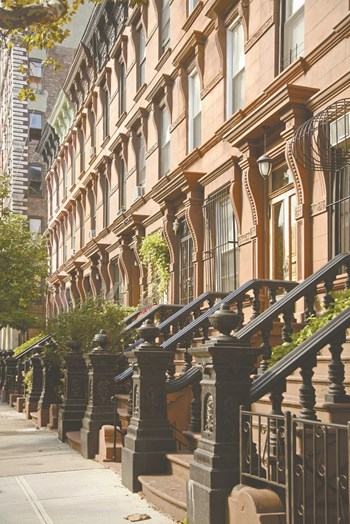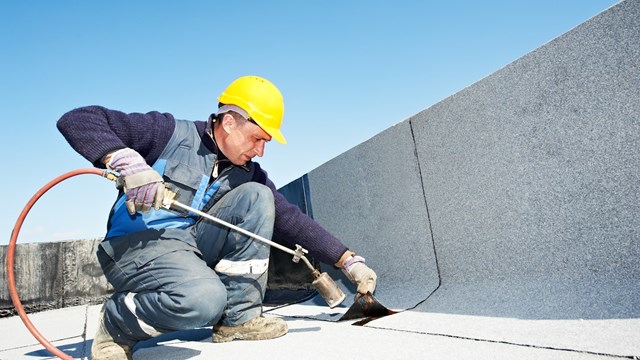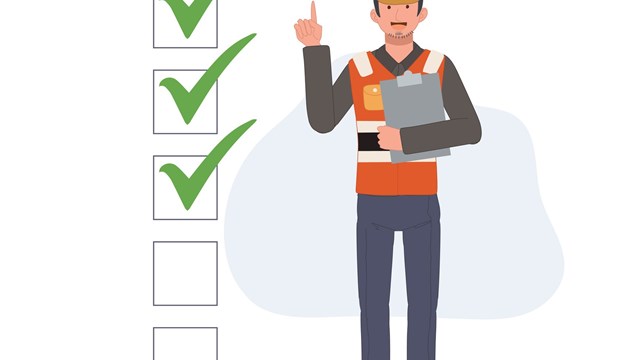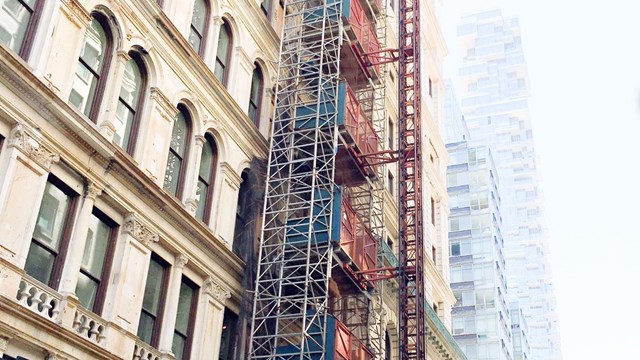
There’s more than enough to worry about living in a major American city without having to worry about being conked on the head by falling debris. That’s the kind of urban hazard Local Law 11 was created to address, requiring all buildings more than six stories in height—including co-ops, condos, hospitals, and commercial buildings—to conduct regular inspections of their exterior facades.
In short, Local Law 11 requires that “Every five years, a building has to account for the condition of its facade, indicate what needs to be fixed and how it will be done,” says C. Jaye Berger, a Manhattan real estate attorney specializing in co-op and construction law.
Originally known as Local Law 10, the measure was signed into law by Mayor Ed Koch in 1980. Nineteen years following the tragic death of a college student struck by a falling brick, Local Law 11 was drafted in 1998 to strengthen Local Law 10 and fill some of the gaps in the original legislation. One of the changes involved amending the original requirement stating that building sections more than 25 feet from the sidewalk did not need to be inspected. After several incidents proved that damage could still be done from that distance, Local Law 11 required that all portions of a building, no matter how far from pedestrian sidewalk traffic, must be inspected.
How Does It Work?
Local Law 11 functions on a five-year cycle and requires all buildings over six stories tall to have their inspections simultaneously—which is why the city of New York seems to sprout sidewalk sheds like a plywood contagion every five years. “The inspection must be done by a licensed engineer or architect retained by the owner of the property,” says Alan S. Epstein, a professional engineer and president of Manhattan-based Epstein Engineering, PC.
Inspection of a building consists of a visual examination of the façade with binoculars or cameras with a telephoto lens. Before the inspection begins, a sidewalk shed must be erected to protect pedestrians passing underneath. An engineer or architect may also get into a building across the way to see the building being inspected from a better angle, says Paul Millman of Superstructures Engineers + Architects, based in Manhattan.
In addition to the visual inspection, “One swath from the ground level to parapet level must be inspected hands-on or close-up,” Millman says. This requires the inspector to “ride a scaffold up and down to really see up close.” This is a vital part of the inspection process because, as Millman explains, sometimes light levels or materials obscure potential problems, and cause a crack or fissure to be missed.
For an average sized building—one roughly 100 feet by 100 feet and 20 stories tall, say—the inspection can usually be completed in two days or less, with the scaffold/up-close inspection taking on average a full day. It also can depend on how ornate the building is and also its age and condition. “Clearly a newer, less ornate building will take less time than an older building,” Millman says.
Following the visual and hands-on inspections, the engineer or architect will compile a report on the structure and submit it to the New York City Department of Buildings (DOB). Based upon the report and its findings, the building will be divided into one of three categories: safe, unsafe and safe with a repair and maintenance program, also known as SWARMP. Repairs indicated in the report of the architect or engineer must be made immediately or else a fine may be levied.
The most common types of repairs fall under categories such as loose bricks, severely cracked stone work or leaning parapet walls—those walls that protect people when standing on rooftops, says Epstein.
Failure to file a report with the time frame allotted also will result in a fine being levied by the Department of Buildings. The fines add up each month until a report is filed, and a second tier of fines will be levied at a certain point by the Environmental Control Board (ECB). Buildings that still fail to comply after several months’ time will see a dramatic increase in the fine amounts. All violations and fines are issued directly to the building’s owner or owners.
For co-op and condo buildings over six stories high, these inspection cycles are just part of the process of doing business. They should not be avoided or eluded, but rather seen as an additional way to ensure the safety and well being not only of passers-by but of residents and merchants who either inhabit or rent in the building. “A lot of places take very good care of their facades, so this is just a formality,” Millman says. Buildings should “always keep an eye on their façade and repair it as needed.” That way, there are no surprises when inspection time comes and expenses can be kept to manageable levels, requiring perhaps just cosmetic repairs and adjustments rather than the rebuilding of a parapet wall or some other significant repair.
What to Watch For
As with any major undertaking, there are always red flags to be conscious of when it comes to façade inspections. When Local Law 11 repairs are undertaken and contractors are engaged, many of those pitfalls come with signing contracts and ensuring that proper insurance and liability coverage has been obtained.
“It’s important to have an attorney involved because the contracts to do this type of work involve a lot of money,” says Berger. For major repairs on large buildings, “it could be upwards of $1 million. Boards need to work with an attorney who is familiar with construction contracts to make sure that the proper provisions are in place,” she says.
One of the most important provisions is the indemnification clause, which will protect the building in the event that a worker is injured while making repairs. “A lot of building owners don’t realize that if a workman employed by a contractor is injured, they may be excluded from coverage under the contractor’s general liability policy.” This means that a year later, “you may find out a person was injured on the job and they can’t sue the contractor because of worker’s comp laws, so they’ll sue the building instead.” The worst part is that “people won’t even know until the lawsuit is brought.”
Hiring a lawyer to review and oversee the contract process can alleviate these issues down the road. And especially when the repair process could be lengthy and expensive, it pays to have all the t’s crossed and i’s dotted well before the first workman arrives on the scene. It is a way to protect residents as well as the financial interests and long-term well being of the co-op or condo community itself.
In addition to consulting with an attorney, it is also important to hire a properly qualified engineer or architect for the inspection itself. “You have to have someone with experience in facades and this type of engineering,” Millman says. In New York City, someone could be a professional engineer who specializes in air conditioning and technically, they would be allowed to file the report with the DOB. But, it would not be in the best interest of the building or the safety of those around it, obviously, to allow that to occur.
When hiring an engineer or architect, ask for references. “It will help you know if you’re dealing with a top-tier professional,” says Millman. Having someone experienced in building inspections also might save a board money down the line. Someone who has examined hundreds of parapet walls will know the difference between one that was built askew and one that is leaning, which can be the deciding factor in whether a building is in need of erecting an entirely new wall or not. It’s those seemingly tiny differences that can make a huge impact not only on safety but on the bottom line.
Also, a co-op or condo board “should be familiar with the law and know the details of when the reports should be filed,” Epstein says. “If there is a failure to file the report, that penalty will be against them.” A board can rely on an architect or engineer to do the inspections, but “they should also stay informed, perhaps through their managing agent, but they need that checks and balances” to keep everything on track.
Changes on the Horizon?
While the basic framework of Local Law 11 has been in place for a decade now, a fairly significant modification may be on the horizon, says Millman. In August 2007, New York City Mayor Michael R. Bloomberg signed Local Law 38, which establishes “staggered inspection cycles” for buildings governed by the façade inspection requirements of Local Law 11. The proposed laws, when adopted, will spread the approximately 12,500 inspection reports processed by the Department of Buildings over a period of several years with the city’s buildings divided into three segments for inspection purposes. Other changes in inspection and reporting requirements also may change with the implementation of this new law. Currently, this proposed law has been issued only for public comment and may still change.
Since its inception nearly three decades ago, Local Law 11 and its predecessor Local Law 10 has helped make the glass, stone and steel canyons of New York City safer for the men, women and children on the ground below. And in the future, as the law evolves and grows, it may mean that the only time a New Yorker has to look up is to enjoy blue skies.
Liz Lent is a freelance writer and a frequent contributor to The Cooperator.






3 Comments
Leave a Comment